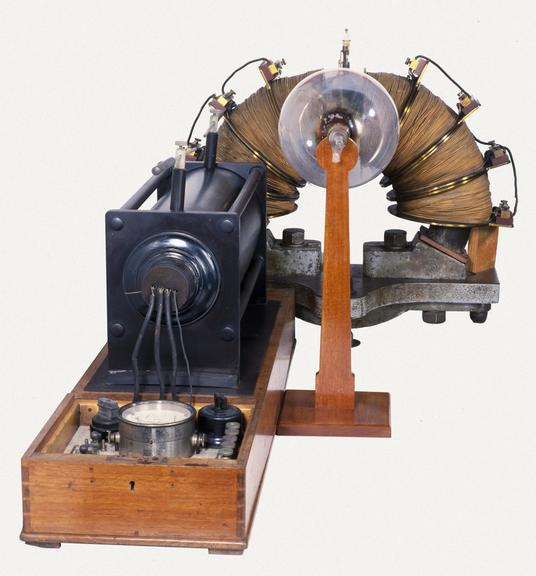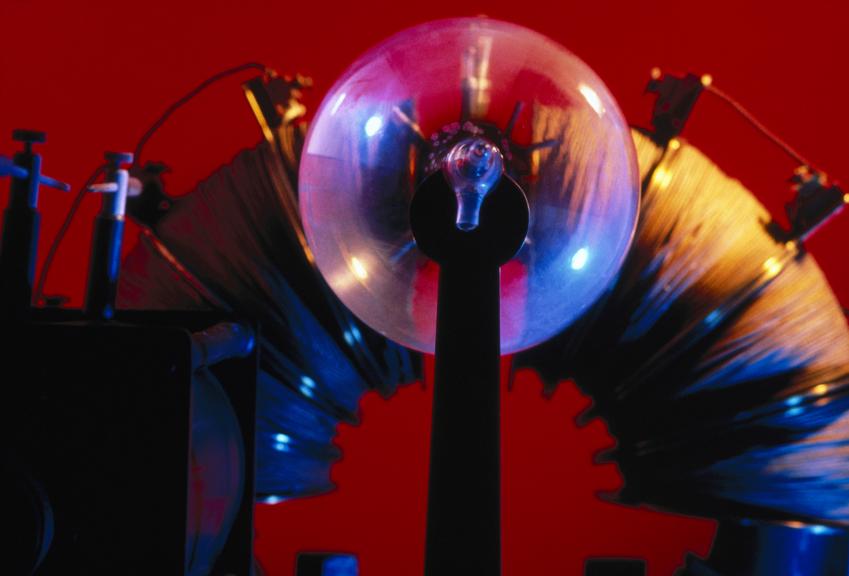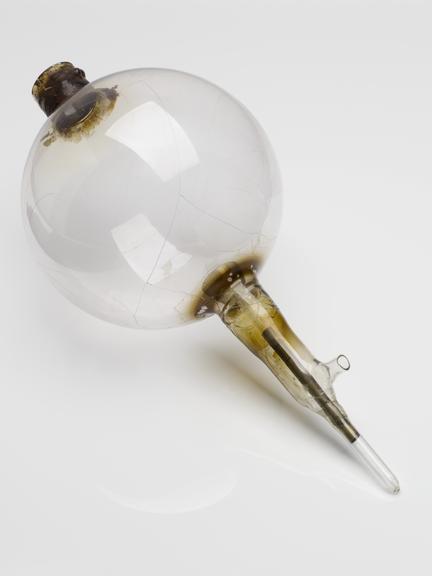
Glass discharge tube, for Aston's original mass spectrograph
1919





Prof. F.W. Aston's original Aston Mass-Spectrograph complete with magnet
The first mass spectograph was designed by Cambridge scientist F W Aston (1877-1945). It could separate isotopes, which are chemically identical atoms with different masses. The spectograph's globe contained a compound of the material to be tested and an electric current then knocked electrons from the material's atoms. Aston worked with J J Thomson (1856-1940) to show that over 50 elements were made up of atoms of different atomic masses but the same atomic numbers.




